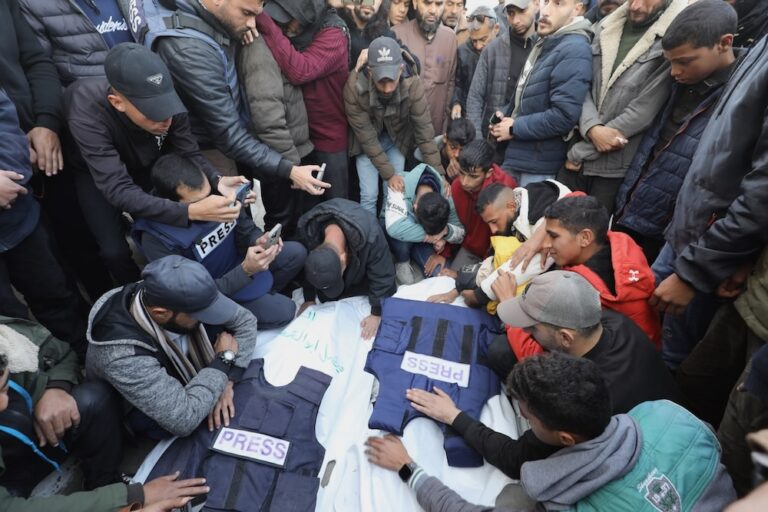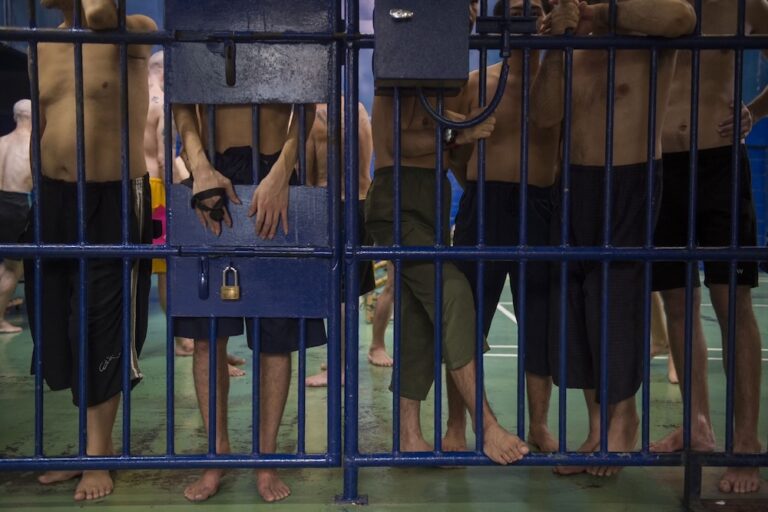(WAN/IFEX) – The following is a WAN press release: Press Freedom Under Siege World-Wide: WAN An onslaught of attacks on journalists and their publications, new government restrictions on freedom of expression and a surge in conflicts have contributed to the deterioration of press freedom in 2003, and have created an ominous outlook for next year, […]
(WAN/IFEX) – The following is a WAN press release:
Press Freedom Under Siege World-Wide: WAN
An onslaught of attacks on journalists and their publications, new government restrictions on freedom of expression and a surge in conflicts have contributed to the deterioration of press freedom in 2003, and have created an ominous outlook for next year, the World Association of Newspapers said Monday in its half-year review of press freedom world-wide.
“Serious limitations of freedom of expression in the form of national security laws, terrorism acts and criminal defamation laws have landed scores of journalists in prison and resigned many more to practising self-censorship,” WAN said in a report to its Board, meeting in New York City.
“The most audacious attempts to create legal barriers to stifle the press can be seen in Uzbekistan, Iran and Zimbabwe,” said the report, which also cited Tunisia, China, Vietnam and the Central Asian nations as particularly repressive countries.
Twenty-six journalists have been killed world-wide since June. Colombia, known for long as the most hostile environment for media in the world, has been exceeded by the Philippines in the death toll in the past six months, with four journalists murdered in the island nation.
The report also said more efforts were being made to control the exchange of information on the internet.
The full report can be found on the WAN web site at http://www.wan-press.org/article2980.html
Region by region, the report said:
– Latin America has confronted a number of press freedom problems in the past six months, from setbacks in media laws in Venezuela and Mexico, to the murder of journalists in Colombia and Brazil and the ongoing economic challenges in Argentina. Journalists and media continue to be attacked with impunity in several countries only 35 of 112 cases of murdered journalists have been solved in Colombia alone. Antiquated media laws continue to stifle the independent press in many countries.
– Europe and Central Asia continue to show a stark contrast to levels of press freedom as 2003 has proved to be a particularly brutal year for media in Central Asia. Independent media in Turkmenistan are virtually non-existent, the Kyrgyz Republic showed a marked decline in press freedom, Uzbekistan continues its systematic harassment of the independent press and media in Azerbaijan suffered a wave of violence linked to the recent national election.
In Russia, the murder of two journalists since June highlights the country’s culture of violence. The use of outdated press laws including the sentencing of a journalist to a year of forced labour for libelling two regional politicians and restrictions on media coverage of the Chechnya war distinguish Russia’s approach to press freedom from its European neighbours.
– Asia has recorded the highest number of murdered journalists since June and severe political repression, excessive restrictions on the media and simmering ethnic and religious tensions exist in many countries. Despite possessing a relatively active independent media, the Philippines and Nepal continue to be the most deadly Asian countries for journalists, with a total of four and three journalists murdered in each country respectively in the past six months.
In China and Vietnam, continued attacks on cyber-dissidents in the name of national security have led scores of journalists and human rights activists into prison with harsh sentences.
Working conditions for local journalists in Afghanistan have worsened over the past six months, as measures taken by the Afghan authorities have created a climate of fear in which journalists are afraid to openly publish articles that criticise leaders. The death sentence imposed on two journalists for blasphemy in August has sparked concern in the international community of the start of a larger crackdown on freedom of expression in the country.
– Although the number of journalists killed in the Middle East and North Africa has decreased significantly since the resolution of open combat in Iraq, the press freedom situation throughout much of the region remains alarming as government control over the press is rigid. In those countries where journalists do enjoy a measure of freedom of expression, they must contend with severe laws which often result in criminal prosecution, arrest and censorship.
– Despite an official resolution of the conflict in Iraq, journalists have continued to suffer the consequences of simmering hostilities and instability throughout the country. In the past six months, four journalists have been killed in Iraq. The US-appointed transitional Iraqi Government Council decreed a series of new rules in which the Arab world’s two leading news organisations Al Jazeera and Al-Arabiya were temporarily banned from covering official events, on the basis that they both promote violence.
– In Africa, a patchwork of complex factors such as civil conflict, autocratic press laws, lack of infrastructure, and totalitarian regimes characterise the press freedom situation in much of the continent.
Southern Africa has seen press freedom further deteriorate with the closure of the Daily News in Zimbabwe, the country’s most popular newspaper, and with continued attacks on journalists.
West Africa continues to be strongly influenced by the aftermath of the Ivory Coast conflict and the recently ended war in Liberia. The economic consequences were unforeseen for the press in the region with, for example, paper supply being cut back in Burkina Faso because of the division of the Ivory Coast. The killing of Radio France Internationale correspondent Jean Hélène in October brought a wave of international protests.
The Paris-based WAN, the global organisation for the newspaper industry, defends and promotes press freedom world-wide. It represents 18,000 newspapers; its membership includes 72 national newspaper associations, individual newspaper executives in 100 countries, 13 news agencies and nine regional and world-wide press groups.


